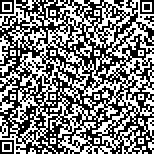| 摘要: |
| [目的]无资料地区的水文模拟,一直是摆在水文工作者中的一大难题。文章尝试利用由美国农业部水土保持局开发的SCS(Soil Conservation Service)模型对资料稀缺的西安市清河流域开展径流模拟估算。[方法]该模型结构简单,参数较少,极大地降低了对研究区基础地理数据与水文数据的依赖程度。由于缺乏实测历年径流总量数据,该文提出径流系数区间法来验证SCS模型模拟效果。以径流系数取值区间的平均值计算出的年际平均径流总量作为验证的参考值。[结果](1)清河流域历年的年径流总量与年降雨总量有很好的对应关系,在不考虑地下水损耗的情况下,年降雨量越大,地表径流也越大,其中2003年径流总量最大,达到1 400万m3,最小为1997年的300万m3。(2)为弥补研究区资料稀缺问题,用径流系数区间法对模拟结果进行验证,验证结果为确定性系数09,纳什系数06,结果表明,基于SCS模型模拟估算清河流域年际径流总量取得了令人满意的效果。[结论]SCS模型在清河流域的成功应用表明,该模型可以在无资料地区或资料稀缺地区开展径流模拟,由于其建模简洁,极大地降低了在类似无资料区域开展水文模拟的难度,为此类地区开展水文研究提供了新的途径。研究结果可为当地水资源管理提供一定依据。 |
| 关键词: SCS模型无资料地区径流模拟估算径流系数区间法清河流域 |
| DOI: |
| 分类号:P333 |
| 基金项目:陕西省水土保持标准体系修编项目(SZTGK-XA-161203-GC); 陕西省水土保持科研示范项目“农村内涝疏导与雨水资源化利用技术研究”(1601) |
|
| APPLICATION OF SCS MODEL IN RUNOFF SIMULATION OF NON DATA REGION*——A CASE STUDY IN QINGHE RIVER BASIN |
|
Liu Chunchun1,Liu Wanqing1※ ,Wang Ning1,Yang Bo2
|
|
1.College of Urban and Environmental Sciences,Northwest University,Xi′an, Shaanxi 710127,China;2.Institute of Soil and Water Conservation,Northwest Agriculture and Forestry University,Yangling, Shaanxi 712100,China
|
| Abstract: |
| Hydrological simulations in areas without data have always been a major problem for hydrographers. This paper attempts to use the SCS (Soil Conservation Service) model developed by the Department of Soil and Water Conservation of the US Department of Agriculture to perform runoff simulations of the Qing River Basin in Xi′an, where data are scarce. The model has simple structure and few parameters, which greatly reduces the dependence on the basic geographic data and hydrological data in the study area. Due to the lack of measured total runoff data over the calendar year, this paper presented the runoff coefficient interval method to verify the simulation results of the SCS model. The average annual runoff calculated from the average value of the runoff coefficient interval was used as a reference for verification. The results showed that (1) The total annual runoff volume in the Qinghe River Basin over the years had a good corresponding relationship with the total annual rainfall. Without considering the loss of groundwater, the larger the annual rainfall, the greater the surface runoff, and in 2003, the total amount of runoff was the largest, reaching 14 million m3, and the minimum is 3 million m3 in 1997. (2) In order to make up for the scarcity of data in the study area, the runoff coefficient method was used to verify the simulation results. The verification result was a deterministic coefficient of 0.9 and a Nash coefficient of 0.6. The results showed that the SCS model was used to estimate the total annual runoff of the Qinghe River Basin with satisfactory results. The successful application of SCS model in Qinghe River Basin indicates that the model can be used for runoff simulation in data free or data scarce regions. Because of its simple modeling, the difficulty of hydrological simulation in a similar data free region is greatly reduced. And new ways of Hydrological studies in these areas is provided. The research results can provide some basis for local water resources management. |
| Key words: SCS Model No data area runoff simulation estimation runoff coefficient interval method Qing River Basin |

